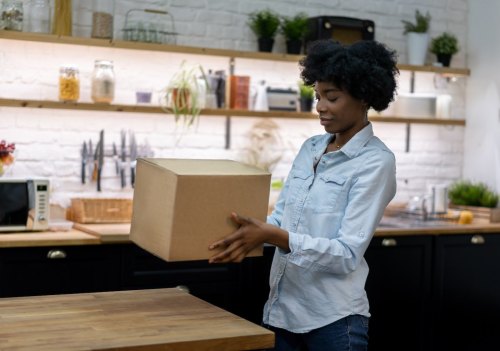We know that diligent hand washing and social distancing are both essential if we’re to stop the spread of COVID-19, but what about all of the other things we touch? Research published last week shows that the virus can live on cardboard for up to 24 hours, and it’s got me a little freaked out. Should I disinfect my mail?
“I don’t think we need to get completely obsessed about packages that come in,” said Anthony S. Fauci, MD, an immunologist and director of the National Institute of Allergy and Infectious Diseases, last night on The Daily Show with Trevor Noah. “Those types of surfaces, the virus might live there for a very short time, but […] I wouldn’t worry about that.” Further, during a CNN coronavirus town hall, Dr. Fauci said that if the disease were to transfer onto something like mail, it would likely be a low concentration.
Jason Tetro, a microbiologist and author of The Germ Files, explains that liquids such as saliva can seep into porous cardboard packaging, but that makes it difficult to pick up the virus without some kind of swabbing. “Swabbing with pressure is not something most people do with their mail and as such there is low risk,” he says. Additionally, it’s believed that the novel coronavirus can only survive on surfaces for 24 hours, which means the risk of COVID-19 being on a package by the time it gets to you is very low. “The only possible way that the mail could be contagious is if the postal delivery worker sneezed or coughed on the mail moments prior to delivery,” says Tetro.
Asked about disinfecting packages, Dave Partenheimer, a spokesman for the United States Postal Service, explained that the CDC, the World Health Organization, and the Surgeon General, have all confirmed that there is currently no evidence COVID-19 spreads through the mail.
If you are still concerned and would like to disinfect your mail, Tetro says you can wipe the surface with a damp soapy cloth or leave the package untouched for 24 hours. However, you’re better off using your energy to clean the objects you regularly touch, he says. The CDC says to regularly disinfect frequently touched surfaces like tables, doorknobs, light switches, countertops, handles, desks, phones, keyboards, toilets, faucets, and sinks.
“It may be possible that a person can get COVID-19 by touching a surface or object that has the virus on it and then touching their own mouth, nose, or possibly their eyes,” the CDC reports. “But this is not thought to be the main way the virus spreads.” The most common form of transmission is still through person-to-person contact.
Psychologists say it’s important to maintain these 10 healthy habits while social distancing, and this is how to properly clean and disinfect your home.
Sign Up for Our Daily Newsletter
Get all the latest in wellness, trends, food, fitness, beauty, and more delivered right to your inbox.
Got it, you've been added to our email list.











